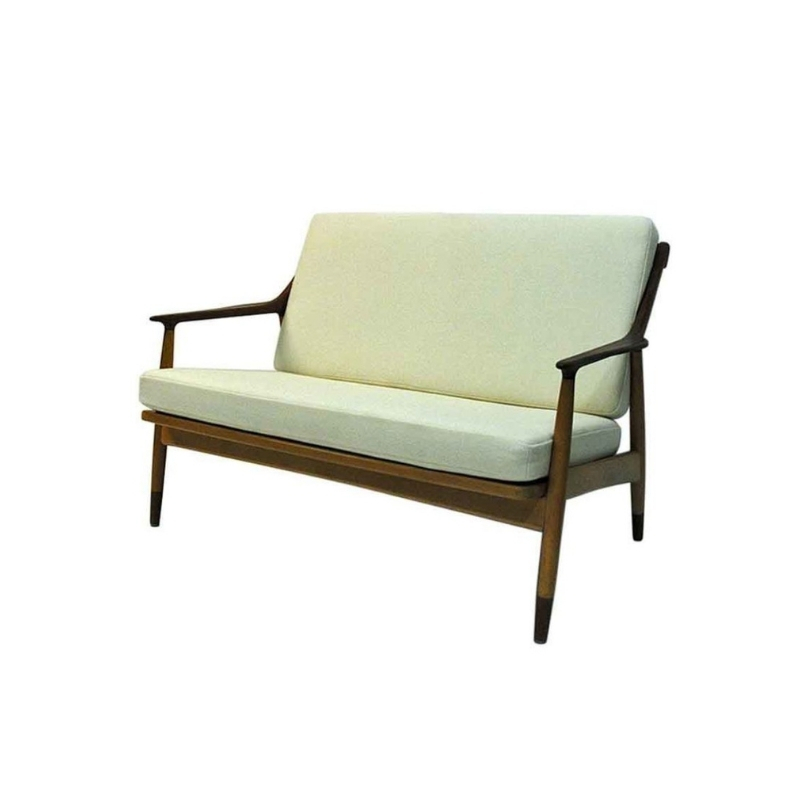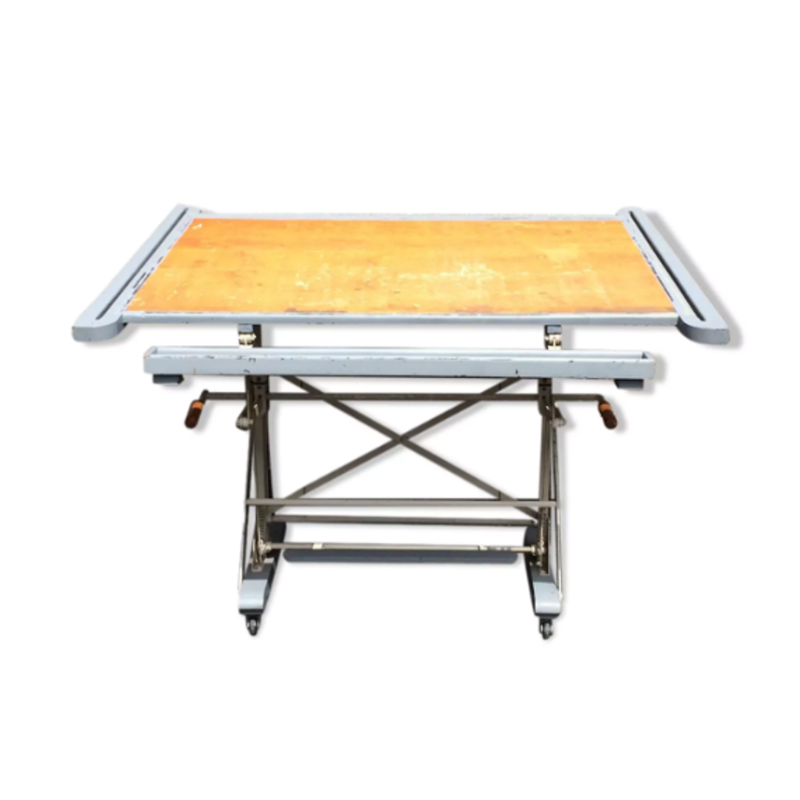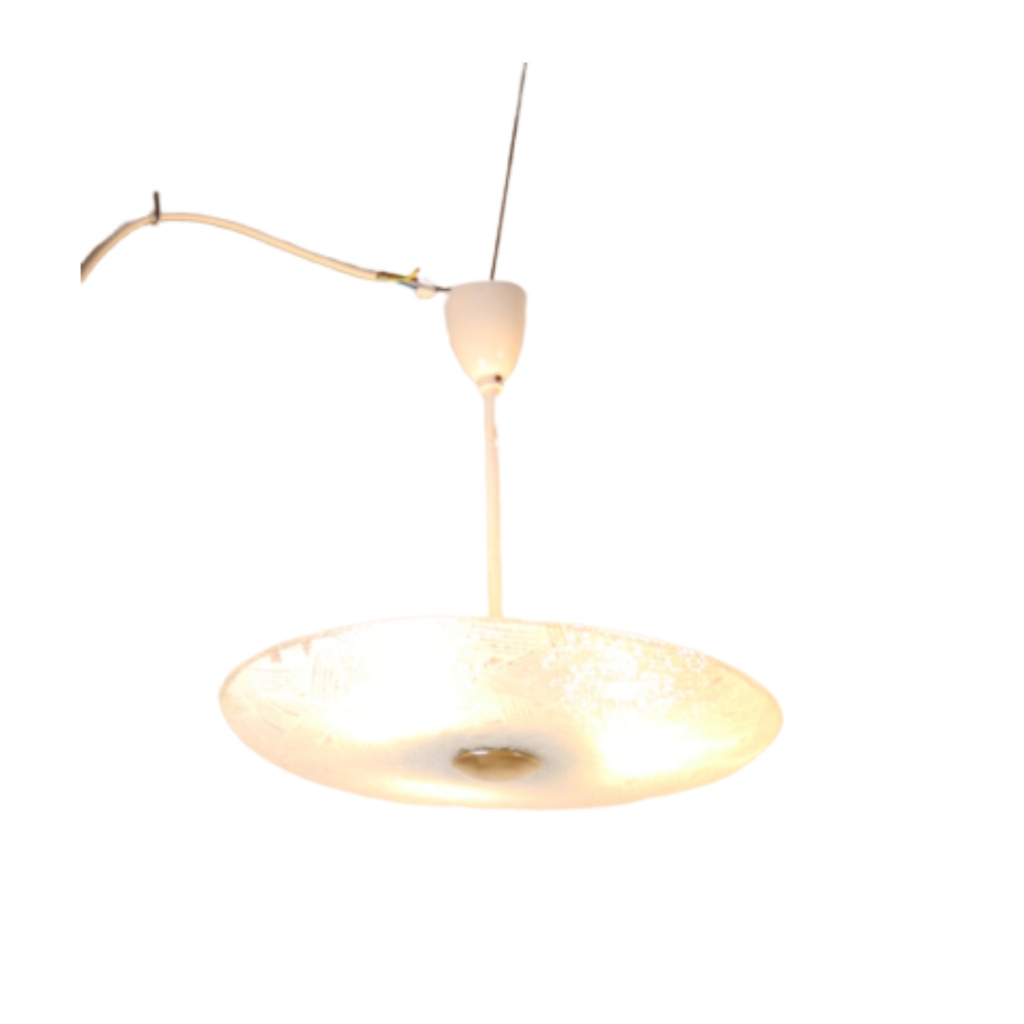...
I would just roll the edges over dowels and pin them, and then attach the dowels to the wall.
(Actually, I would have dowel pockets sewn, but if you want to corrupt the original thing as little as possible, pin it.)
There are also flat strip mounts for hanging quilts and things that can be found at craft stores I think.
My recent offers on such things as this have been refused. Dammit.
There are some suggestions provided in the linked thread
that you may find helpful.
http://designaddict.com/design_addict/forums/index.cfm/fuseaction/thread...
Pinning would be worse than
sewing a rod pocket. With sewing, the weight of the hanging fabric is distributed among (along?) many small points (each stitch, that is). If you pin, there is a lot more weight on fewer points (each pin). You are more likely to get separation of the weave at these points from the weight of the fabric pulling the warp or weft apart.
Have someone stitch a rod casing using a long stitch length, like 4-5 stitches per inch, along the top side. You can either fold the tablecloth over to form the casing, or stitch a strip of another fabric to the edge, fold over, and stitch again to the fabric. Just make sure your casing is wide enough to accommodate the rod.
You might want to do the same thing with the lower edge to add a rod as weight, just to help the thing hang straighter and flatter if that matters to you.
(A long stitch length will have the least impact on the fabric and will be easiest to remove if you or someone else no longer wants to use this as a wallhanging in the future.)
Nice.
Taking the second option -- " stitch a strip of another fabric to the edge, fold over, and stitch again to the fabric" -- will mean that the viewer will see the entire field of the piece, with no fabric lost to a fold-over ? The photo shows the top of the tablecloth missing a bit of dimension, assuming the design is printed to center on the cloth . . . ?
From the picture you posted
It looks like it was previously stretched like a painting (note the dirty or stained edges and creases). If so, why not get a correctly sized wooden stretcher or strainer and mount it with thin staples on the back. Stretchers are what artists use to prepare canvas or linen for painting and actually can be expanded or stretched with wooden keys to keep the fabric taunt, strainers are just a wooden sub-frame of a fixed size. Stretchers are available at art supply stores and are sized in even inches.
If you stretch it like a painting it will have more presence on the wall and might give a more "art-like" presentation and look less like a banner or tablecloth hanging on the wall.
Nice cloth, Clark.
Pegboards idea would look great, especially if your framer were to finish the sides of the frame with properly folded fabric finishing the sides of the frame. And darling *spanky*, My seamstress recently hemmed a pair of my pants 2 inches too short...and used the same technique that you mentioned above to correct the mistake. It now looks to be a perfect hemline.
Hello to all, especially EamesHead, SDR and Ray Eames,,,
Your Aunt Mark
After looking at the photo
of the cloth more closely, I'd go with Pegboard's suggestion of the stretcher frame. The cloth looks like it's soiled where it wrapped around the edges of the previous frame. This might be hard to completely clean without maybe fading or damaging the print in some way. I wouldn't want to risk it, anyway! So just do the frame and see that it's the same size or a hair smaller than what was used before.
(Aunt Mark--two inches short?? That's bordering on capri length. Good think a fix was possible.)
Thanks!
Wow! Thanks for all the great advice. I should have mentioned that the picture wasn't actually of my tablecloth as I haven't received it yet. That's just a picture of the same cloth design I found online. The one I bought is actually in pretty great shape with no stretching on the ends. In that case I am wondering if I should go with the rod pocket approach? I have to admit though the whole frame thing I am sure would look really nice! Thanks again for all the advice.
Know that
Using dowels top and bottom there will be some rippling of the fabric that you'll see from the side, as it won't be stretched, it will just be hanging. I still prefer this method as it's easier to handle, roll up, etc. This is a bit more casual method of display though, compared with stretching tight to make a rigidly tailored panel.
All fine suggestions but I...
All fine suggestions but I think I would prefer it on a table.
That said you might consider getting it back to flat and then pressing between a cotton felt and glass, all framed. No needles, no stretching, fraction would hold it in place. I've seen that done with smaller pieces... 52" square might be a bit large.
If you need any help, please contact us at – info@designaddict.com












